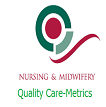Nursing & Midwifery Quality Care-Metrics (QC-M)
Introduction
Patient safety is one of the most critical issues facing healthcare today. The delivery of care that is safe, patient-centred, compassionate, effective and efficient is the responsibility of all health care professionals. As nurses and midwives are at the centre of the care delivery continuum delivering clinical care around the clock, their contribution to influence high quality, safe care is immense. Research suggests that errors and patient harm are caused by system and process failures (Institute of Medicine, 1999). Clinical care processes delivered by nurses and midwives are based on scientific evidence, standards and/ or professional consensus. Measuring the degree to which nurses and midwives adhere to care processes plays an important role in assuring, sustaining and improving the safety and quality of care delivered to patient and clients. Indeed, the importance of measuring the quality of care has been deemed as critical by the Health Information and Quality Authority who stated:
“Unless we actually measure the quality and safety of care, we cannot determine if improvements are being made” (HIQA, 2013, pg.2)
Nursing and Midwifery Quality Care-Metrics (QC-M) enable quality improvement and accountability of care by generating evidence about the quality of nursing and midwifery care utilising care process quality indicators, which provide a framework for how the fundamentals of nursing care can be measured (Foulkes, 2011). Thus, QC-M aim to illuminate the contribution of nursing and midwifery to safe and effective care and provide the evidence and assurance to managers, governance structures and regulators that care quality is a priority for the professions of nursing and midwifery. Furthermore Nursing and Midwifery QC-M are fundamentally a continuous quality improvement journey highlighting areas of practice that require improvement and measuring for tangible evidence that improvement efforts are impacting in the delivery of care.
The Challenge
The quality of healthcare is a national and international concern. Increasing reports of patient harm and poor quality care has created the requirement for healthcare professionals to question what is known about the quality of care being delivered in the clinical environment. Measurements of clinical care and outcomes have, in the past, proved to be complex and were not always nurse or midwife specific. Many healthcare providers and organisations lacked basic information on the quality of nursing and midwifery care. Anecdotal evidence was often used as an indicator of concerns in relation to care delivery and feedback in a systematic way to the individual nurse or organisation was not always available. Now more than ever, there is a need for strong and visible nursing and midwifery leadership at all levels in order to maximise our contribution to quality; to demonstrate the impact of nursing and midwifery, and to provide robust assurance of the quality and safety of nursing and midwifery care. The impact and effect of nursing and midwifery care needs to be captured through measurement. Furthermore, evidence from scholarly literature outlines the requirement for a national architecture for measuring quality in order to enable a consistent, robust and standardised approach to quality measurement for nurses and midwives (Robert & Cornwell, 2012).
Objectives of the Nursing & Midwifery Quality Care-Metrics project include:
- To provide a national standardised approach to care quality and safety data measurement.
- To introduce at a national level a web tool to collate and report on all results in a standardised format.
- To ensure that the most up-to-date evidence is available and used by nurses and midwives in relation to clinical care processes.
- To provide real time data to nurses, midwives and their managers with regards to delivery of safe, quality care.
- To embed a culture of Quality Improvement Plans.
The Solution
The concept arose from work undertaken in the United Kingdom by the Heart of England NHS Foundation Trust (HEFT). The Chief Nurse at HEFT developed a web based tool entitled Test Your Care (TYC) (www.testyourcare.com ) to monitor patient safety and promote care quality following an increase in complaints, falls, pressure ulcers and medication management errors.
In 2011, through Nursing & Midwifery Planning Development (NMPD), QC-M were developed and implemented in over 100 clinical areas across the North West, North East & Dublin North and were endorsed by the Office of Nursing & Midwifery Services Director (ONMSD), Health Service Executive (HSE).
A small number of acute hospitals had also commenced measuring nursing and midwifery care processes. These sites either employed external agencies to develop a system to meet their single site requirements or used the Microsoft excel application. In 2014, the ONMSD entered into a service level agreement with HEFT to provide access to the TYC System nationally to HSE Organisations across the Republic of Ireland. The online web based measurement system TYC is now widely available to all Directors of Nursing/Midwifery who wish to embed Quality Care-Metrics within their local quality governance frameworks.
The implementation of the QC-M project into an individual service is outlined within a framework consisting of four stages: initiation, planning, implementation and mainstreaming. These stages are further subdivided into 15 individual steps from Step 1 where Regional Nursing and Midwifery Planning and Development invite expressions of interest from the services, to Step 15 where planning and implementation of the QC-M project within the service, has been carried out and the project is monitored, reviewed and evaluated (see Figure 1).
The QC-M process is a cyclical process and takes place monthly. A random sample of 25% of the patient complement in the ward/unit or ten charts from services with vast caseloads such as the Public Health Nursing Service network areas are selected for evaluation. Data from these patients/patient records are entered on the electronic system TYC. Data from a particular area can be entered at anytime over the month in order to be included in the results for that month.
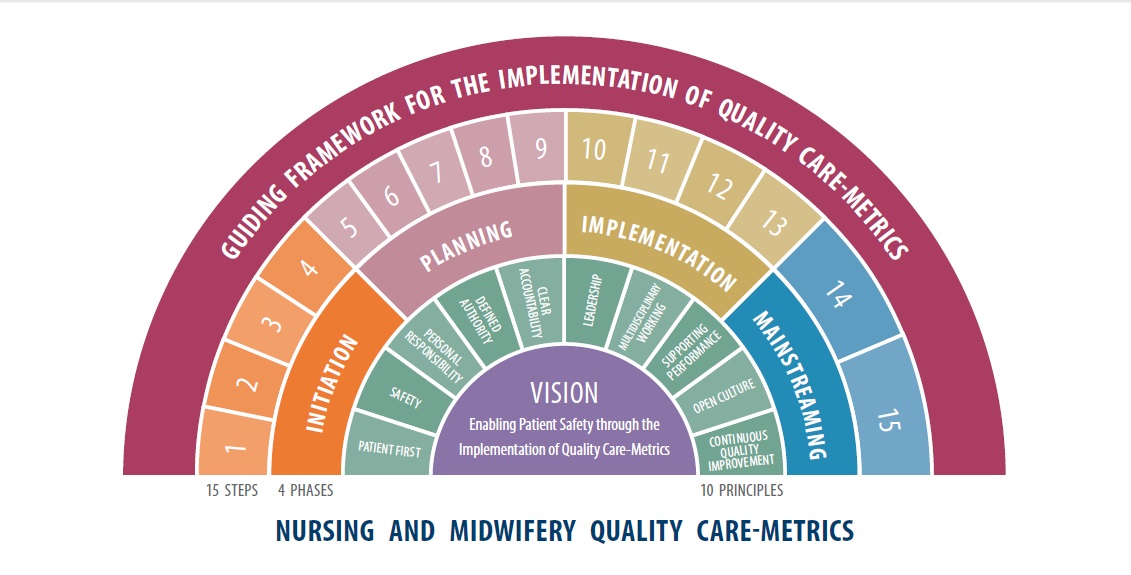
Figure 1. Model for the Implementation of Quality Care-Metrics (HSE, 2015)
The data is entered electronically using hand held tablet computers provided to assist with implementation of the QC-M project. Once data collection is complete for that month, reports can be run and printed. Action plans are then devised by service managers for indicators that have scored poorly and require improvement. Management and staff within the service then work together to implement the changes needed. Trends from the previous months’ scores are analysed and data collection begins again for the next month as the cycle continues.
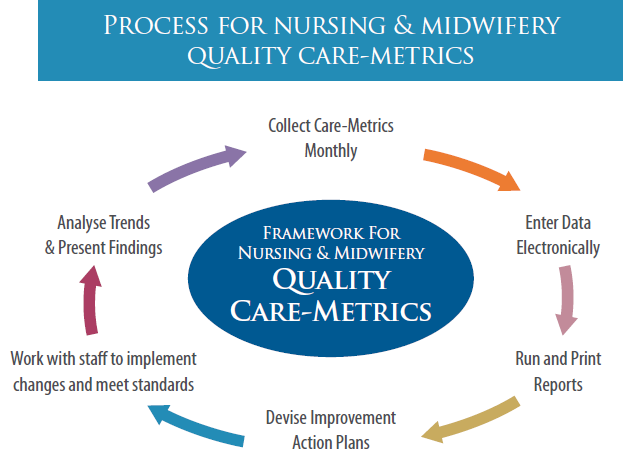
Figure 2. Process for Quality Care-Metrics
This complete cycle is facilitated by the use of the online, password protected TYC system, which is used by the HSE under licence from the Heart of England Foundation Trust in the United Kingdom.
Collecting: Data are entered electronically for each metric using yes/no/not applicable for each question (quality indicator).
Figure 3 displays an example of the ‘collect screen’ for the pressure ulcer metric, which has five indicators (questions).
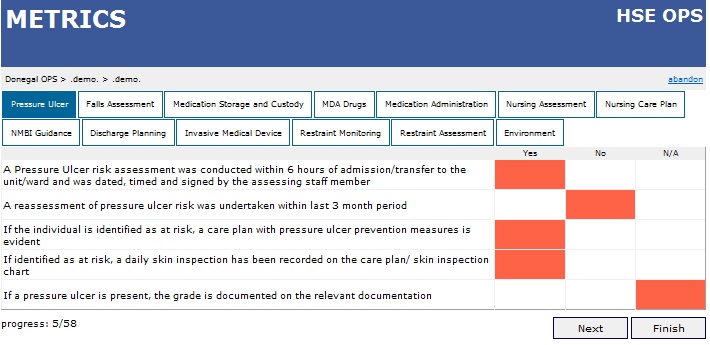
Figure 3. Example of ‘collect’ screen from www.testyourcare.com
Reporting: Once data for the complete 25% sample has been entered for the month, a report can be viewed online or printed from the TYC system. The report displays percentage compliance with agreed national standards for that month. Reports generated are ‘real-time’ as they can be displayed immediately once all data for that month has been entered. Thus, services can view the standard of their care without the data collection/report generation delay normally inherent with other types of clinical audit. The format of the online report uses a traffic light and percentage value system (Red/Orange/Green) to indicate level of compliance with standards as follows:
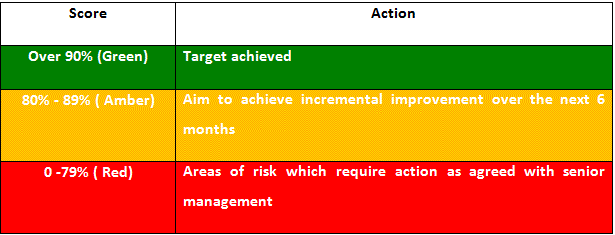
Reports on test your care are designed to be simple and readable by all healthcare staff and focus on trends in scores over time with arrows upward indicating improvement from the previous month; arrows downward indicating disimprovement and a box indicating no change from the previous month. (See Figure 4). The system also allows individual reports to be customised to the requirements of the user as well as looking at data in more depth to assist with decision regarding actions likely to affect improvements in care and hence in QC-M scores.
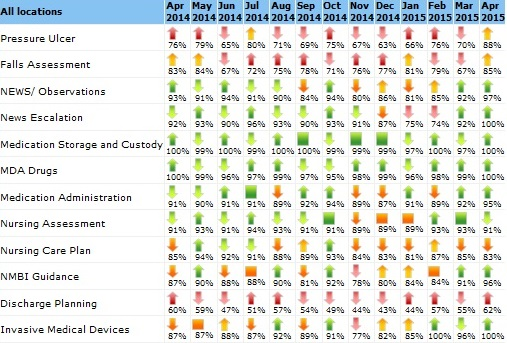
Figure 4. Example of ‘Summary Report’ screen from www.testyourcare.com
Action Planning: Once the monthly report has been generated, the next stage of the QC-M cycle involves formulation of action plans for those areas scoring in the ‘red zone’ (79% and below) and areas remaining persistently in the ‘amber zone’ (80-89%). Again this is facilitated by the TYC system. This section allows the team leader or clinical nurse/midwife manager to formulate plans specific to their area, which aim to address areas shown to have scored poorly. The action plan function also facilitates nomination of a ‘lead’ person for each action plan, thus ensuring involvement of the nursing/midwifery team in improving their care processes, as well as target, review and completion dates (see Figure 5.). The aim of the action plan is to ensure an improvement in score over a specified timeframe depending on the complexity of the action plan required.
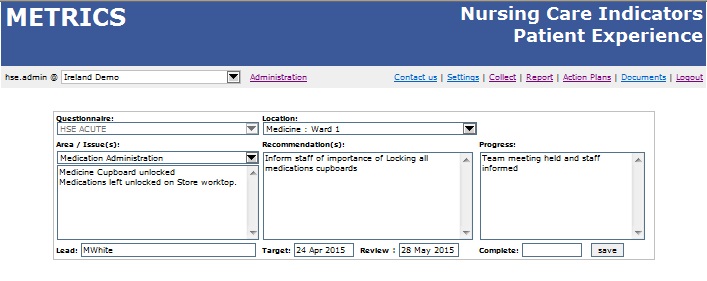
Figure 5. Example of ‘action plan’ screen from www.testyourcare.com
In summary, the cyclical order of the QC-M process allows trends to be analysed over a number of months to give a more comprehensive picture of the quality of nursing and midwifery care. Quality Care-Metrics are seen as a ‘snapshot in time’ of the quality of nursing and midwifery care processes and differ in this respect from clinical audit, which is seen as a more in-depth analysis. Figure 6 below outlines the core set of metrics currently available to HSE and HSE funded services.
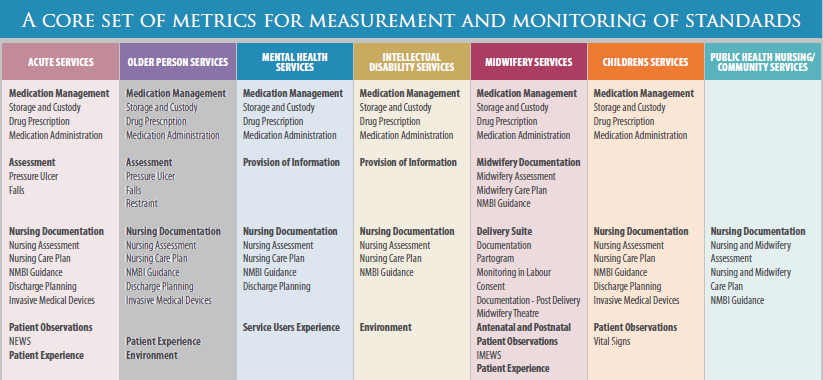
Figure 6. Core suite of Quality Care-Metrics available to services
The Benefits
Quality Care-Metrics provide a structure and framework to enable measurement of the quality of nursing and midwifery care processes. It enables identification of areas where practice is good which must be recognised and celebrated, as well as those areas that require improvement. Benefits of the system can be seen in figure 7 and outlined as follows:
- Delivery of a standard of care that is safe, evidenced based and congruent with legislative and national policies
- Establishment of good nursing and midwifery processes will improve the standard of care and create good outcomes for patients
- Provision of timely information on quality allows meaningful corrective action to be undertaken
- Identification of areas of good practice which must be celebrated, as well as areas where improvement is required
- Provision of valuable information to managers in understanding how well their individual area/organisation are managing the delivery of safe, quality care
- Promotion of staff engagement and accountability to care providers for the quality of their services and promotion of culture of continuous improvement among staff.
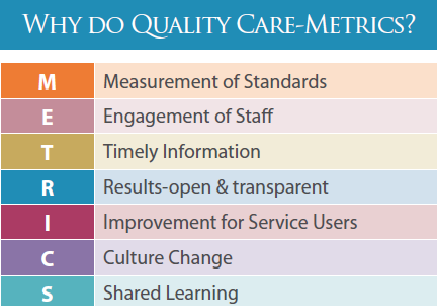
Figure 7.-Why Implement Quality Care-Metrics
Conclusion
The QCM project is a huge success with over 500 locations within healthcare organisations implementing QCM data collections. The QC-M project clearly demonstrates some of the key deliverables of the eHealth Ireland Knowledge and Information strategy:
Care Delivery Enablement – QCMs provide a series of clinical and care delivery capabilities which digitally enable processes allowing data to be captured as a by-product of clinical activity, sharing data on the quality of care provided, identifying areas requiring improvements. Approaches such as clinical dashboards will make data easily accessible and embed data measurement into routine clinical practice for all nurses and midwives. The introduction of hand-held technology to support point of entry data acquisition and reporting ensures more clinician time spent with patients. QCMs promote the ability for patients to provide feedback on the care they received through the patient experience QC-M. Data measurement plays a pivotal role in promoting improvements in the safety and quality of patient care and is a central priority at policy and operational level (Gallen, 2015, HIQA, 2013, HSE, 2015).
Health Service Insight – The QC-M initiative delivers the information management, reporting and analysis solutions and processes which provide timely, reliable information and decision support for patients, clinicians and management from the micro level (e.g. ward or unit) up to the macro view (e.g. organisational wide performance, hospital group performance).
Next Steps
In order to enable a consistent, robust and standardised approach to quality measurement for nurses and midwives, that will achieve consensus from the professions, seven national work-streams are currently being established (see Figure 8) (Gallen, 2015). The purpose of the work-streams is to identify, agree and develop the priority metrics sensitive to nursing and midwifery.
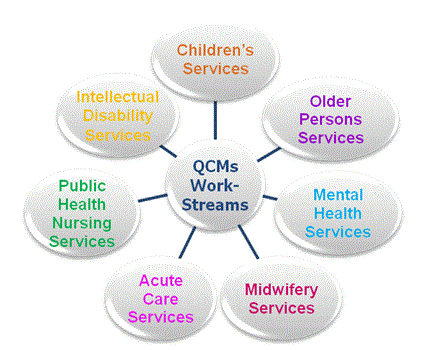
Figure 8. National Quality Care-Metrics Work-Streams
Each work stream will be guided academically to ensure that the outputs are valid and rigorous, will establish the academic processes for metric development and support the work-streams to achieve a core minimum dataset for measurement and reporting (Gallen, 2015). This work will serve to ensure that all future QC-Ms are relevant, academically robust and sensitive to the influences of nurses and midwives (Gallen, 2015).
References
Foulkes, M. (2011) Nursing metrics: measuring quality in patient care. Nursing Standard, 25 (42), p40-45.
Gallen, A. (2015) Quality Care in Nursing and Midwifery, World of Irish Nursing and Midwifery, 23 (9), pp. 61-62.
HIQA (2013) Guidance on Developing Key Performance Indicators and Minimum Data Sets to Monitor Healthcare Quality. HIQA: Dublin.
HSE (2015) Guiding Framework for the Implementation of Nursing and Midwifery Quality Care-Metrics in the Health Service Executive Ireland. HSE: Dublin.
Robert, G. & Cornwell, J. (2012) What matters to patients? Policy recommendations. A Report for the Department of Health and NHS Innovation Institute for Innovation and Improvement, Warwick.
- Ambulance Arrivals Project A Case Study
- SNOMED National Release Centre (NRC)
- SVUH Award winning Patient Flow Whiteboard
- Scan for Surgery
- Hospital-based care
- Digital Natives Sign App
- Digitisation of risk assesment tools for Adult mental health services in north Dublin
- Patient Engagement Operating Systems - Hep C
- Digital Transition for HSCPs at St. James's Hospital
- Primary Care Centre Castlebar Case Study
- Mario - Managing active and healthy ageing using caring service robots
- Claimsure - Health Insurance Claims Management System
- Cyber Attack Response
- Data systems in SVUH Emergency Department
- Electronic Discharge Prescription Pilot
- Epilepsy EPR
- eReferral
- eReferral Radiology Pilot
- eRostering
- Electronic Blood Tracking
- GP Practice Management Systems
- Healthmail
- Heart Failure Virtual Clinic
- Infrastructure - MPUP to ECAM
- IT Security - Small changes, big difference
- Kidney Disease Clinical Patient Management System
- Local Asset Mapping Project at St James' Hospital
- LUCY
- Mi Kidney App
- Model Community
- NCHD - Employment Record Portal
- Nursing & Midwifery Quality Care Metrics
- Ophthalmology Electronic Patient Record
- PharmaBuddy
- Radiology & Electronic Patient Record
- National Smart-Pump Drug Library of Paediatric and Neonatal Standardised Concentration Infusions
- Quality & Patient Safety
- Robotic Assisted Surgery Programme
- Shared Learning on EHR
- St. James' Hospital - National Haemophilia System
- Tallaght Hospital Pharmacy
- Tallaght Hospital Patient Engagement App
- Track & Trace
- Using IT to Improve Ireland's Public Sector Healthcare
- National Audiology Clinical Management System (NA-CMS)
- St Vincent's University Hospital Award Winning Whiteboard Patient Flow System
- Snomed Case Study
- Telehealth Project Donegal
- St Vincent's Whiteboard Patient Journey System a Case Study
- Ambulance Arrivals Project


